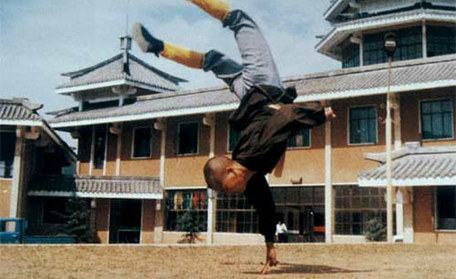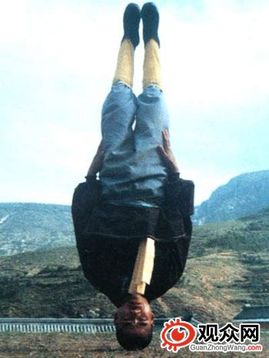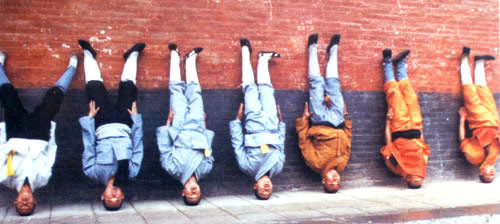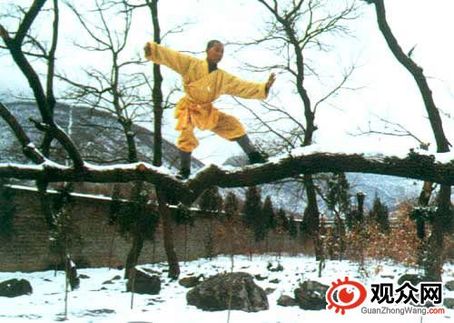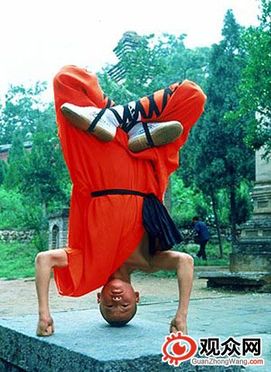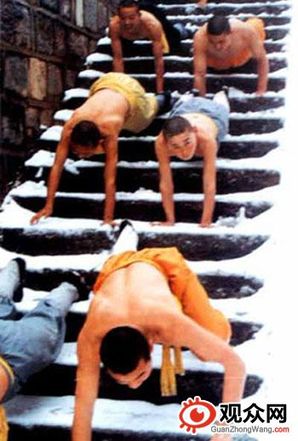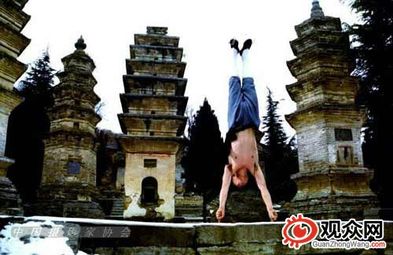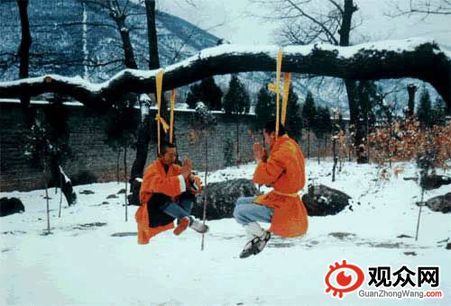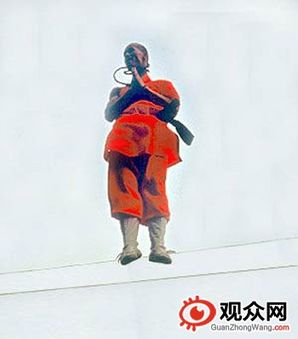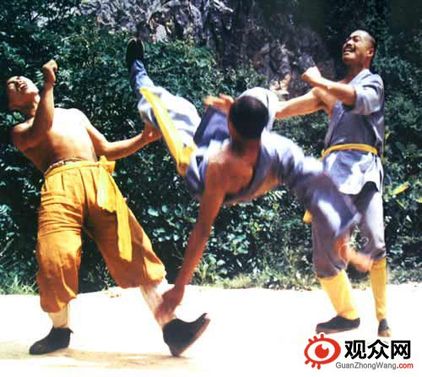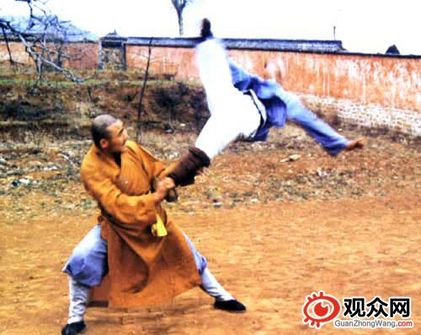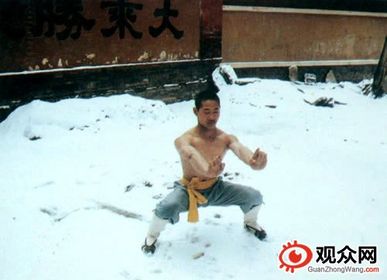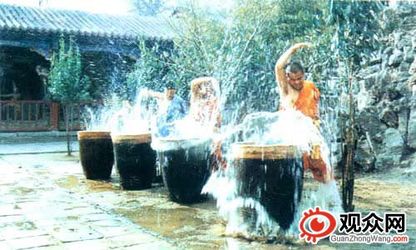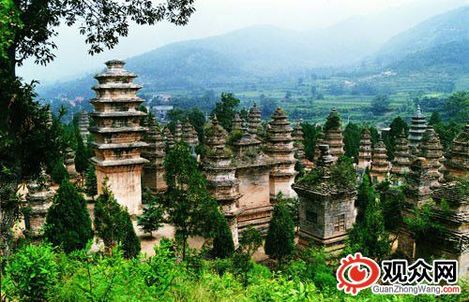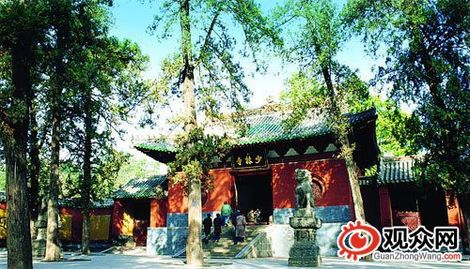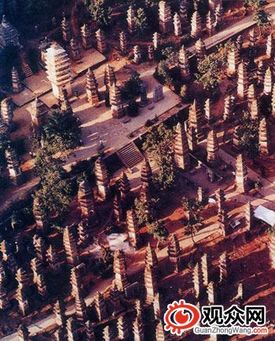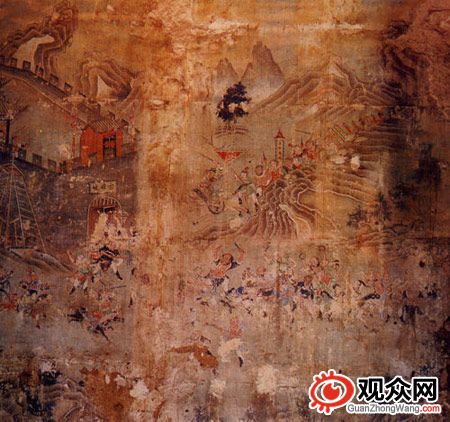Documentation of Secret and Authentic Shaolin Martial Arts
Original Chinese Language Article By: http://www.guanzhongwang.com
(Translated by Adrian Chan-Wyles PhD) Shaolin Temple martial arts are the product of the realisation of the essence of Ch’an Buddhism, manifested through the physical practice and mastery of many (ancient) different military skills. It is believed that the Shaolin Temple is the birth place of Ch’an Buddhism in China (which originally arrived from India). The Ch’an method (of meditation) reveals the bright and pure Buddha-nature, so that enlightenment is achieved by the practitioner. For the Buddha, his primary method of self-cultivation was that of disciplined, seated meditation. Therefore the Ch’an method is considered the pre-eminent pathway for Buddhist practice, which is combined with a martial arts practice that develops both bravery and courage. Shaolin monks practice seated and moving meditation and this is how they master in-depth qigong exercises and sophisticated martial arts techniques. The mind is ‘stilled’ and cleared of delusion, whilst the exact positioning of the body is perfected through movement. In essence, both ‘stillness’ and ‘movement’ are as ‘one’ and there is no contradiction, with each having an equal ability to realise the Buddha-nature. Martial arts practice also ensures that the minds and bodies of the monks are fit and strong, and that the monks possess self-defence skills. In history, this advanced martial ability has allowed the monks to protect the Shaolin Temple from attack, and to pursue the maintenance of law and order in the local community.
When people speak of Chinese martial arts today, they invariably think of the Shaolin Temple. This is because the martial arts of the Shaolin Temple tradition has become a symbol for the entire field of expertise that is Chinese martial culture. This is because the Shaolin Temple centres its Buddhist and martial traditions around an Indian Bodhisattva referred to as the Kinnara King who wields a Chinese fighting staff. As this combined spiritual symbolism is at the centre of Shaolin practice, it is entirely appropriate that the Shaolin monks practice, master and perfect the arts of meditation and martial self-cultivation. Nowadays the entire world is aware of the Shaolin Temple and its Buddhist and martial traditions. This exposure has led to the traditions of the Shaolin Temple being declared a ‘Representation of Human Oral History and Spiritual Culture Relevant to Humanity’. It has also been decided that the Shaolin martial system should be referred to as ‘gongfu’ rather than ‘wushu’, because the term ‘gongfu’ suggests an arduous method used entirely for self-cultivation, whereas ‘wushu’ (i.e. ‘martial arts’) can sometimes be used (in the Chinese language) to refer to military activity and the destruction associated with warfare (which the peaceful Ch’an Buddhist teachings of the Shaolin Temple thoroughly reject). The Shaolin spiritual and martial traditions are designed for character development and the realisation of enlightenment only.
©opyright: Adrian Chan-Wyles (ShiDaDao) 2016.
Original Chinese Language Source Text: http://www.guanzhongwang.com/Folklore/20140326/7420.html 揭秘最真实的少林功夫 少林功夫术的要旨是禅武合一。少林寺是佛教禅宗的祖庭,禅宗以明心见性、顿悟成佛为要旨。在佛门眼中,参禅是正道,拳勇一类乃是末技,僧众们不过是借练气功习武达到收心敛性、屏虑入定的目的。同时也可收到健身自卫、护寺护法的效果。 人们一提中国功夫,必称少林;少林功夫成为中华武术的象征。少林功夫是指在嵩山少林寺特定佛教文化环境中历史地形成,以紧那罗王信仰为核心,以少林寺武僧演练的武术为表现形式,并充分体现禅宗智慧的传统佛教文化体系。天下功夫出少林。只要说到少林寺,几乎所有人都会首先想到少林功夫。2005年,少林功夫将申报“人类口头和非物质文化遗产代表作”。少林寺申报的是“功夫”,而不是“武术”。功夫是修行,是参禅。练“功夫”的目的是为彻底改变一个人的品行素质;少林僧人的练武正是一种修行。” |
